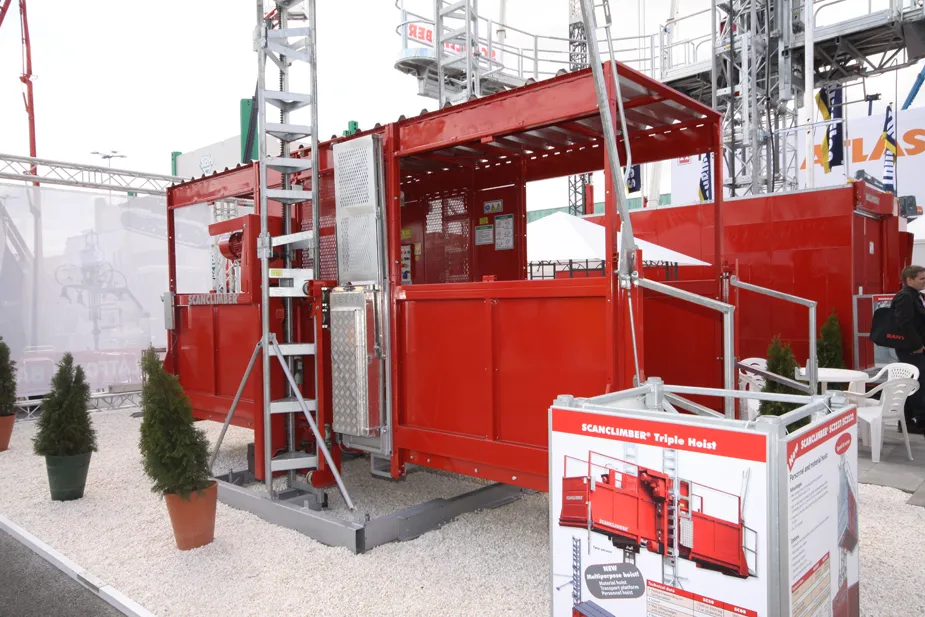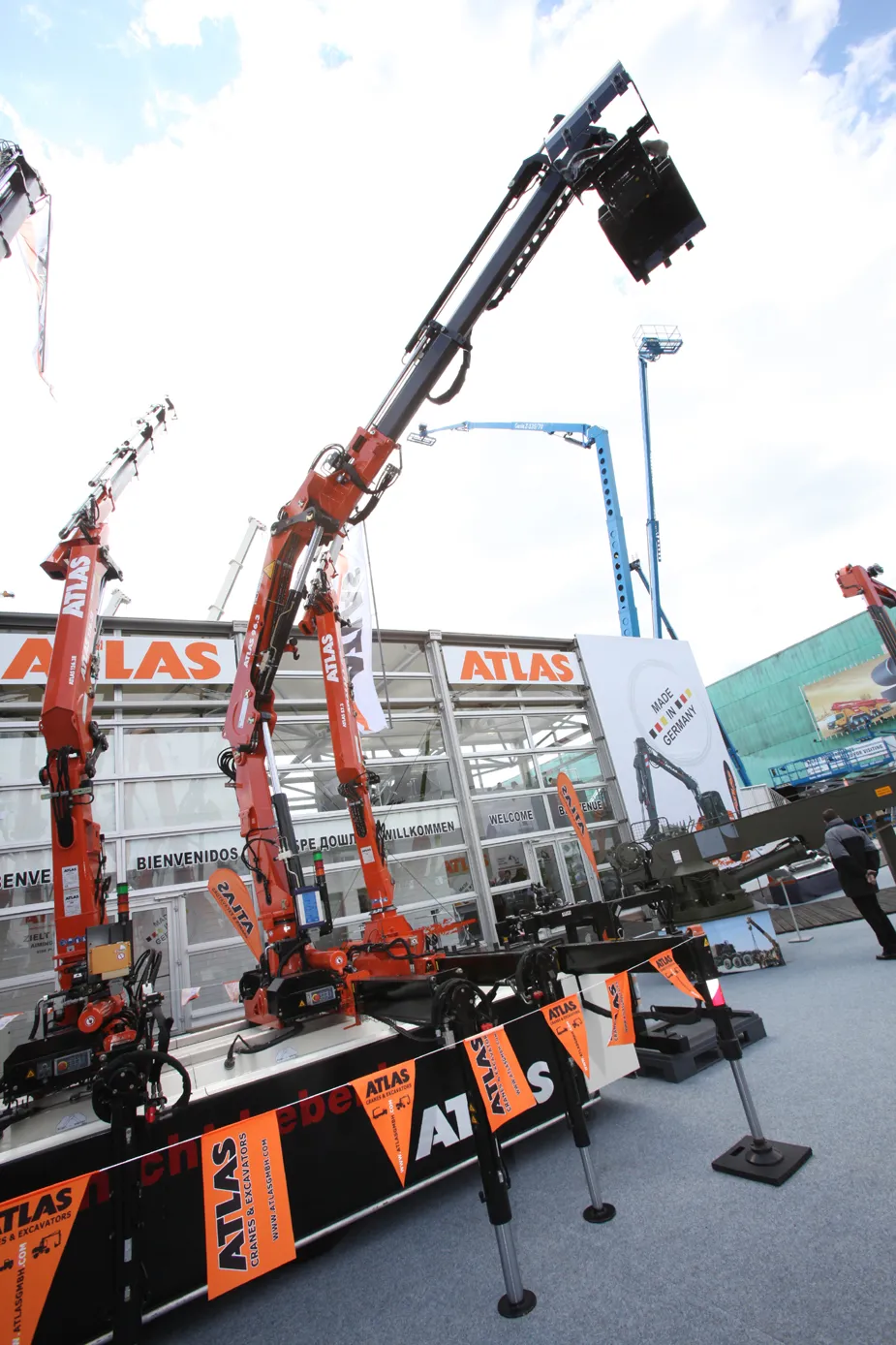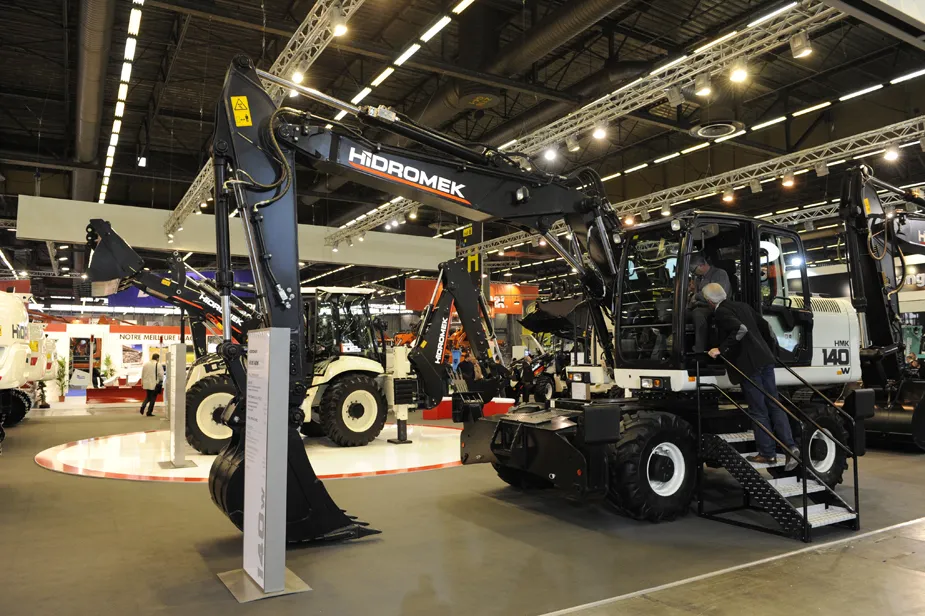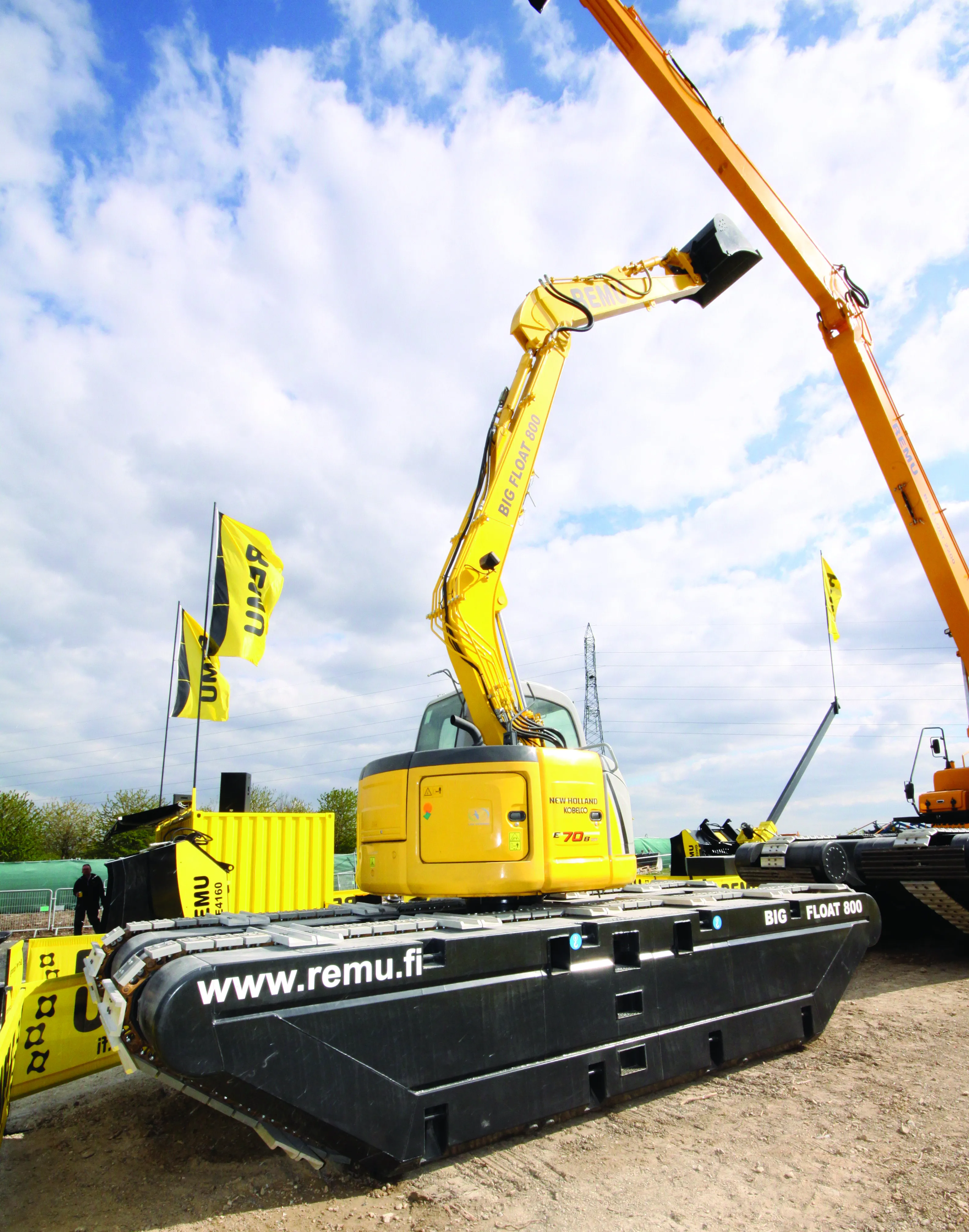Scanclimber claims to have developed the world’s first callable multipurpose hoist. Triple Hoist, being exhibited by the Finnish firm at Intermat, is said to be lightweight and deployable in three different ways – as a material hoist; a transport platform; or as a personnel hoist. Scanclimber says Triple Hoist has been specifically designed for smaller building projects, making them ideal for rental and scaffolding companies. Because of its multipurpose use, fast installation and value price, Scanclimber cl
January 6, 2017
Read time: 2 mins

Triple Hoist, being exhibited by the Finnish firm at Intermat, is said to be lightweight and deployable in three different ways – as a material hoist; a transport platform; or as a personnel hoist.
Scanclimber says Triple Hoist has been specifically designed for smaller building projects, making them ideal for rental and scaffolding companies. Because of its multipurpose use, fast installation and value price, Scanclimber claims the Triple Hoist provides a high return for customers’ investment.
In cooperation with TUV in Munich, Scanclimber has developed a call control system for Triple Hoist that allows users to call the platform from a ground station.
Adding extra safety systems is said to have enabled Scanclimber to double the running speed of Triple Hoist from 12m/s to 24 m/s. This, combined with its callability, is estimated by the firm to increase Triple Hoist’s transport capacity by 35%.
The new Triple Hoist is said by Scanclimber to conform to the latest safety standards and features overload protection and over speed safety devices, said to ensure operator safety while prolonging the working life of the machines.
Because of its modular design, Triple Hoist’s platform length can extend from 1.7m up to 5.1m.
Scanclimber's single mast Triple Hoist has a maximum payload capacity of 800kg. The dual mast version can cope with loads up to 2,000kg.
%$Linker:








